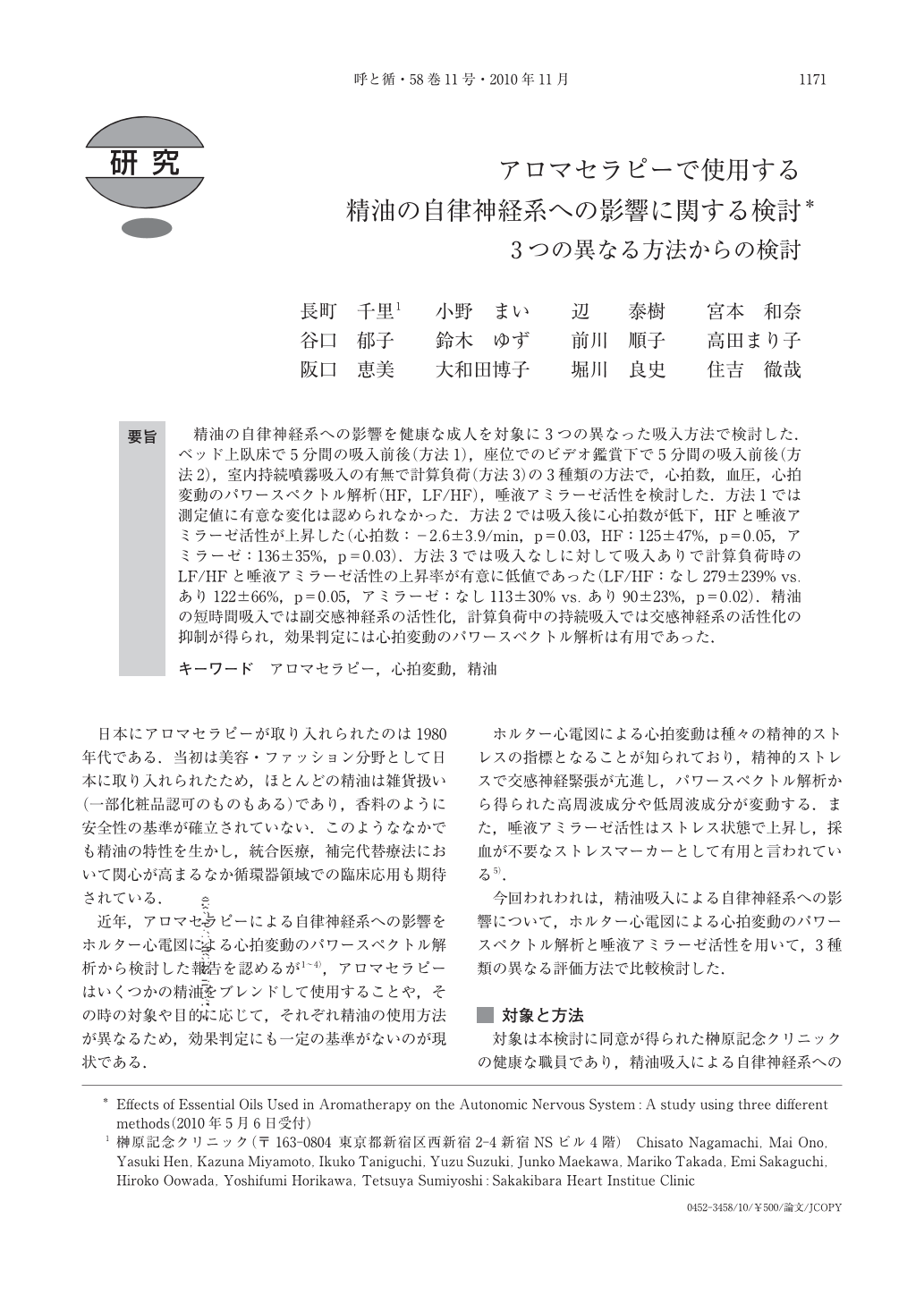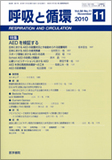Japanese
English
- 有料閲覧
- Abstract 文献概要
- 1ページ目 Look Inside
- 参考文献 Reference
要旨 精油の自律神経系への影響を健康な成人を対象に3つの異なった吸入方法で検討した.ベッド上臥床で5分間の吸入前後(方法1),座位でのビデオ鑑賞下で5分間の吸入前後(方法2),室内持続噴霧吸入の有無で計算負荷(方法3)の3種類の方法で,心拍数,血圧,心拍変動のパワースペクトル解析(HF,LF/HF),唾液アミラーゼ活性を検討した.方法1では測定値に有意な変化は認められなかった.方法2では吸入後に心拍数が低下,HFと唾液アミラーゼ活性が上昇した(心拍数:-2.6±3.9/min,p=0.03,HF:125±47%,p=0.05,アミラーゼ:136±35%,p=0.03).方法3では吸入なしに対して吸入ありで計算負荷時のLF/HFと唾液アミラーゼ活性の上昇率が有意に低値であった(LF/HF:なし279±239% vs. あり122±66%,p=0.05,アミラーゼ:なし113±30% vs. あり90±23%,p=0.02).精油の短時間吸入では副交感神経系の活性化,計算負荷中の持続吸入では交感神経系の活性化の抑制が得られ,効果判定には心拍変動のパワースペクトル解析は有用であった.
We examined the effects of essential oils on the autonomic nervous system in healthy adults, using three different inhaling methods. The heart rate, blood pressure, power spectral analysis of heart rate variability(HF, LF/HF)and salivary amylase activity were measured before and after inhaling for 5 min lying supine on a bed(method 1), before and after inhaling for 5 min while watching a video in a sitting position(method 2), or with or without inhaling a continuous indoor diffusion during a mental arithmetic stress test(method 3). In method 1, no significant differences in the measurements were detected. In method 2, heart rate was lowered(-2.6±3.9/min;p=0.03), while HF(125±47%;p=0.05)and salivary amylase activity were elevated(136±35%, p=0.03). In method 3, LF/HF(no inhalation 279±239% vs. inhalation 122±66%;p=0.05)and salivary amylase activity(no inhalation 113±30% vs. inhalation 90±23%;p=0.02)were both significantly reduced during mental arithmetic stress. Short inhalation of essential oils suppresses parasympathetic nervous activation while continuous inhalation during mental arithmetic stress suppresses sympathetic nervous activation. Power spectral analysis of heart rate variability is useful for assessing the effects of essential oils.

Copyright © 2010, Igaku-Shoin Ltd. All rights reserved.


